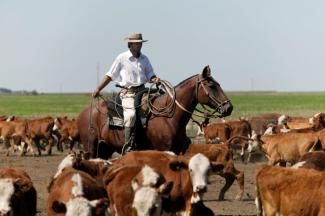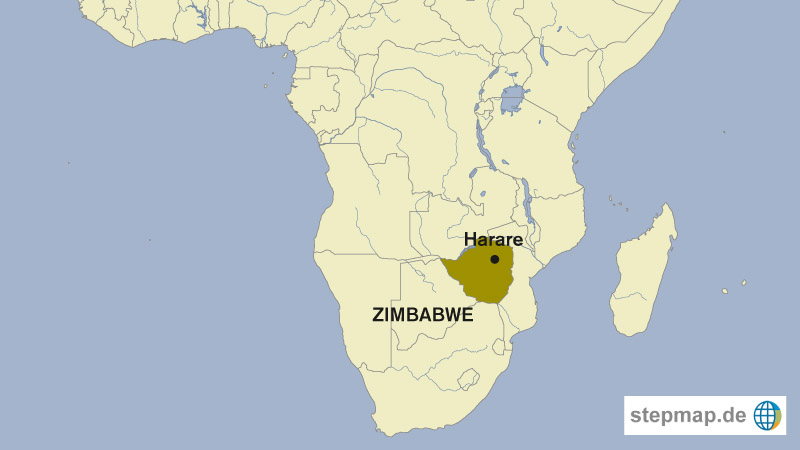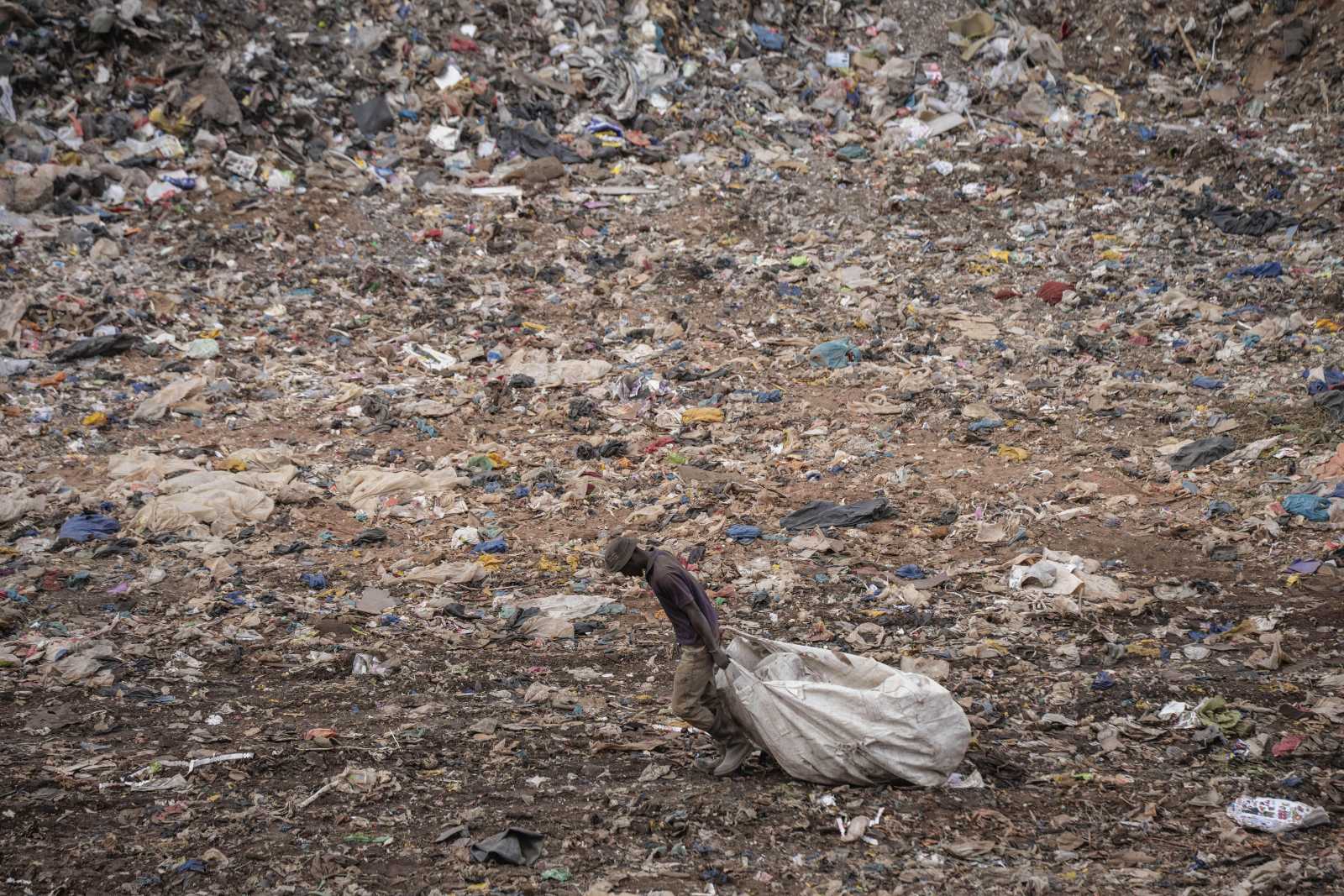Climate change
From dream to nightmare

Internationally, Argentina is known for its excellent beef, a result of cattle bred on the wide grass lands of the Pampa region. However, things have changed considerably in the past decades. The economy has been restructured with a focus on grain exports. Soy beans matter especially. About 90 % of cattle breeding is now geared to the domestic market (see box) in Argentina.
Grain cultivation requires land, and as a consequence, animal production is now done with more intensive methods. Cows are kept in closed pens. These fattening corrals are also called feedlots. The environmental consequences are immense.
A contaminating industry
In general, the ranching industry is considered a great polluter. According to the Food and Agriculture Organization of the United Nations (FAO), it accounts for almost 15 % of human-caused greenhouse-gas emissions. The FAO states that “the production of meat and cow milk causes the greater part of these emissions, with 41 % and 29 %, respectively.”
The UN agency points out that beef production of South America in particular “emits around 1 billion tons of carbon dioxide (CO2)” annually, which equals 15 % of total emissions produced by the global stockbreeding sector. A report by the Inter-American Institute for Cooperation on Agriculture (IICA) states that agriculture is responsible for almost 45 % of Argentina’s climate gases, and cattle production alone accounts for almost 30 %.
A report by “Alianza del Pastizal” (Grasslands Alliance), a collective of civil-society organisations, maintains that each step in the production chain must be considered to understand the impact on climate change. Methane that results from cows’ digestion is only part of the problem. Changes of landuse and feedstuff production matter too. The NGOs argue that “the emissions of the industrialised processes are 12 times higher than those of free-range cows on grassland” (also note article by Christine Chemnitz and Barbara Unmüssig in D+C/E+Z e-Paper 2015/07, p. 18 ff.).
In the fattening corrals, many animals are kept on limited land. Depending on the business model, 100 to 500 cows stay on a single hectare. In the past, cows were free to use one to 10 hectares throughout the year, depending on region, climate and grass.
Saladillo is a small town in rural Buenos Aires province. It is called “the capital of the feedlots”. In the past ten years, more than a dozen of these establishments were started here. The environmental impact is terrible. Gabriel Arisnabarreta, an agronomist and owner of a small family farm, lives in Saladillo. He has founded a civil-society environmental organisation, “Ecos de Saladillo”, which deals with these issues.
“The enormous quantity of manure and urine which is accumulated in the feedlots cannot be transformed by micro-organisms in the ground. It filters through to the aquifers and contaminates the groundwater,” Arisnabarreta says. “The huge amount of rotting dung in a small space expels gases like methane or nitrous oxide which stink, are poisonous and make life nearly impossible here.”
Dung used to be “a blessing for the soils”, Arisnabarreta adds, but the fattening corrals have turned it into “a serious problem”. A feedlot of 10,000 animals with an average weight of 200 kilos each produces 100,000 kilos of manure and urine per day. The civil-society activist insists that micro-organisms in the soil cannot transform such vast amounts into nutrients. A full grown cow weighs more than 500 kilos.
Claudio Sarmiento, an agronomist from the Universidad Nacional de Río Cuarto, which is based in the middle of the Pampa, agrees: “In pastoral animal husbandry, manure is not a problem, on the contrary, it is a benefit. Each cow produces around 4,000 kilos of dung per year and about the same in urine, which the animal distributes evenly, thereby increasing the fertility of the soil.” (also see article by Cornelia Heine in D+C/E+Z e-Paper 2015/08, p. 38 f.) Things are different in feedlots, the researcher points out: “The nitrogen of the cow urine converts into nitrates, which dissolve in the water and filter down to the groundwater.” Such contamination is unhealthy.
Moreover, 3 million hectares of forest were destroyed in the past decade to make space for grain production and grazing land. On the other hand, areas which historically produced excellent Argentinian beef are now used to grow grain that is exported to feed cattle in Europe and Asia. According to official data, 20 million hectares are used for soy production today, and 95 % of the harvest is exported.
Better options
Forest-pasture systems have been on the rise in the last few years. According to the INTA (Instituto Nacional de Tecnología Agropecuaria), an Argentine institution concerned with agro-technological development, they are in use on 34 million hectares, which include commons and indigenous land. There is a great variety of forest-pasture systems.
Fifty families who live in an area called La Libertad (Freedom) in Córdoba province are an example. Their community-owned land is part of the Chaco Árido, a forest that gets little rain. Horacio Britos belongs to the Movimiento Campesino de Córdoba, a local farmers movement. He appreciates that the La Libertad community “practices cattle ranching with natural feed stuff.” The cows feed on grass, but also on fruits and leaves. “The animals wander off some kilometres and return a few days later,” the agronomist says.
Virgin forests matter because they prevent desertification. They can be used for traditional and indigenous, extensive animal husbandry. A healthy forest, Brito says, is resilient even when there is little rain. Deforested land, however, is prone to soil erosion.
Towards the future
Climate experts predict that from 2020 to 2029, Argentina will have two to eight percent more rainfall than the historical average in the centre and east of the country, while rainfall will decrease by up to 12 % in the northeast. Average temperatures are expected to rise by 0.7 to 1.2 degrees.
If Argentina is to contribute to slow down this trend, it must take livestock production into account. Environmentalists have several proposals:
- The government should prioritise forest protection and adopt a different economic model accordingly.
- It would make sense to boost natural production, for instance by granting tax advantages to farmers depending on how meat is produced. Laws that stimulate a rotation of land use, in order to avoid monoculture, would be helpful.
- Industrial feedlots should be prohibited, because the country has the natural conditions for producing high-quality meat.
Leonardo Rossi is a journalist and lives in Córdoba, Argentina.
leo.j.rossi@live.com.ar
Link:
Alianza del Pastizal:
http://www.alianzadelpastizal.org/en/













